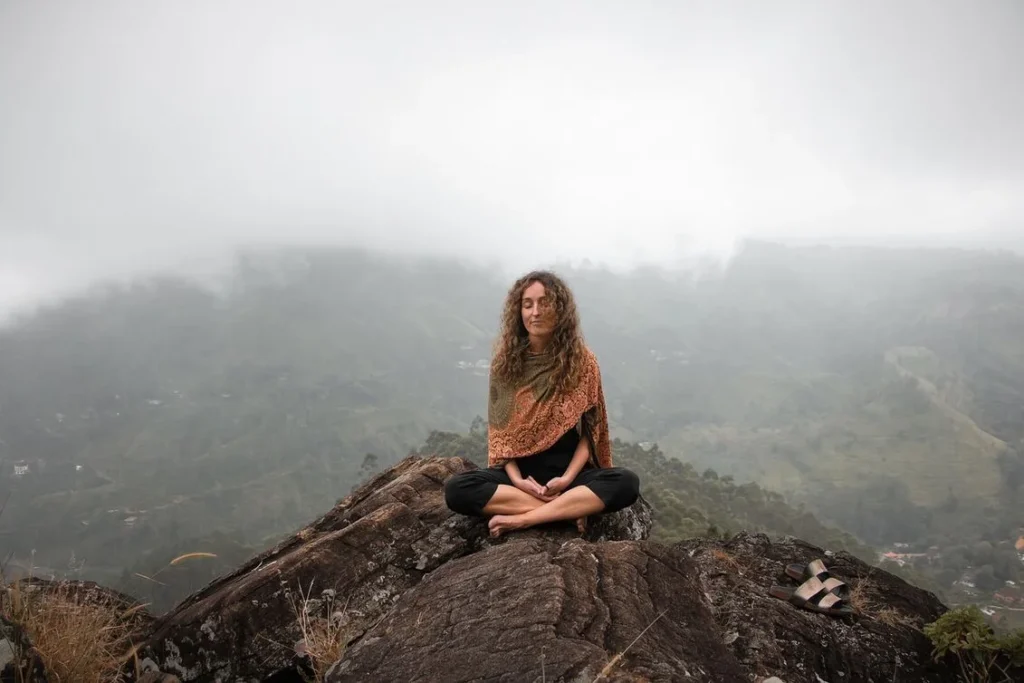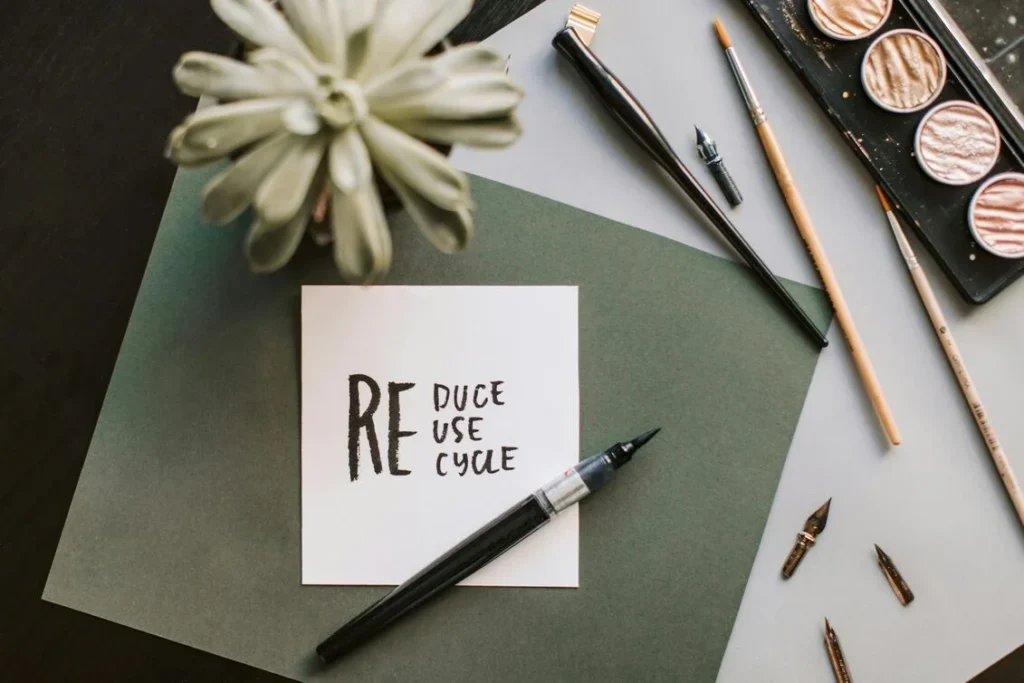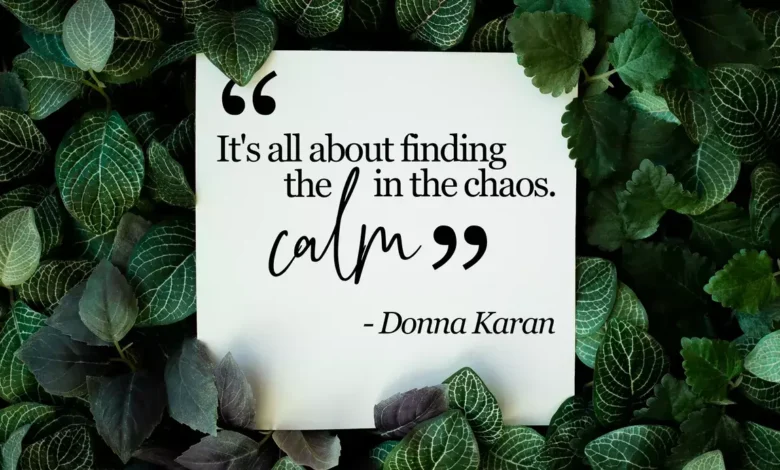From Chaos To Calm: Building A Sustainable Lifestyle
In today’s fast-paced society, many people feel overburdened, stressed, and disconnected. The unrelenting pressures of modern life leave many yearning for serenity, balance, and a sense of purpose. One way to transition from chaos to calm is by creating a sustainable lifestyle. A sustainable lifestyle doesn’t just mean living in an environmentally responsible way; it involves achieving balance across all aspects of life, including the mental, physical, emotional, social, and environmental.
This article explores how you can create a sustainable lifestyle that promotes overall well-being while also being mindful of the environment around us. By adopting sustainable behaviors and practices, it is possible to shift from chaos to calm, finding peace and balance in your day-to-day life. We’ll delve into the significance of sustainability, its relevance in modern life, and actionable steps to incorporate sustainable practices into your daily routine.
Understanding the Meaning of Sustainability
Using renewable resources, recycling, and lowering carbon footprints are some of the environmentalist concepts that come to mind when one hears the phrase “sustainability”. But sustainability is more than just minimizing environmental damage. This way of thinking includes making deliberate decisions, planning ahead, and developing a way of living that promotes planetary and individual well-being.
A sustainable lifestyle addresses three key pillars:
1. Environmental Sustainability
This entails cutting back on waste, protecting the environment, and conserving natural resources. Living in peace with nature is its main theme.
2. Social Sustainability
This speaks to building inclusive, equitable, and healthy communities. Building supportive social structures, upholding human rights, and cultivating connections are all important.
3. Personal Sustainability
This pillar which encompasses mental, physical, and emotional health is frequently disregarded. Living a sustainable life entails taking care of oneself, establishing sound boundaries, and designing an environment that promotes long-term wellbeing.
Life can change from chaotic to peaceful when these three sustainability factors come into harmony, encouraging a feeling of direction and serenity.
The Chaos of Modern Life
Many people in today’s culture feel as though everything is out of balance and in disarray. Stress and burnout can result from the constant pressure to perform, balance a variety of obligations, and stay connected in an always-on digital world. For many people, the fast-paced nature of life, time constraints, and social expectations have produced an overwhelming environment.
Some signs of a chaotic lifestyle include:
1. Chronic Stress
There is frequently little time for self-care or relaxation due to cultural expectations, long job hours, and family obligations.
2. Overconsumption
The excess and materialism that are encouraged by the current consumer society result in messy homes, growing debt, and mental exhaustion.
3. Poor Health
People are struggling to find time for self-care, which has led to a rise in unhealthy eating habits, inactivity, and sleep deprivation.
4. Disconnection
Even while people are more connected to the internet than ever before, a lot of them still feel alone, cut off from their communities, and unable to build lasting, meaningful relationships.
Many people look for methods to regain control and tranquility since the chaos of modern life has a negative impact on their mental, emotional, and physical well-being.
Building a Sustainable Lifestyle: A Path to Calm
1. Prioritize Mindful Living
The cornerstone of a sustainable existence is mindfulness. It entails living in the present and observing your thoughts, deeds, and environment without passing judgment. Living a mindful life helps you make more deliberate decisions and more effectively set priorities for the things that really important.
Here’s how to incorporate mindfulness into your life:
Daily Meditation

Allocate ten to fifteen minutes each day for meditation or deep breathing techniques. This practice helps alleviate stress, improve focus, and encourage emotional equilibrium. For more insights on how mindfulness can positively impact your well-being and even your appearance, check out on the article, Meditation for Beauty.
Mindful Consumption
Before making a purchase, ask yourself if you truly need the item. Prioritize quality over quantity and avoid making impulsive purchases.
Be Present
Participate completely in all activities, including eating, spending time with loved ones, and working. Being in the moment clears the mind and encourages serenity.
2. Simplify Your Life
Decluttering your schedule, thoughts, and physical space is a necessary step toward living a simpler life. You may reduce needless tension and distractions by concentrating on what is actually important.
Declutter Your Space
Organize your workspace, living quarters, and personal possessions first. Give away everything you don’t need or use to make room for a tidy and tranquil space.
Simplify Your Schedule
Examine your obligations and cross out any that don’t enrich your life. Say no when necessary, and reserve your time for things that make you happy or help you unwind.
Digital Detox
To make more time for meaningful contacts and relaxation, cut down on your screen time and social media usage.
3. Cultivate Sustainable Health Habits
Developing a sustainable lifestyle requires both physical and mental well-being. Developing long-term healthy behaviors is more important for sustainable health than short-term cures.
Eat Whole Foods
Prioritize eating a diet rich in whole grains, fruits, vegetables, lean meats, and balanced carbohydrates. Steer clear of processed foods, which might make you feel lethargic.
Move Regularly

Whether it’s yoga, walking, cycling, or any other activity you enjoy, make physical activity a part of your everyday routine.
Prioritize Rest
The foundation of good health is sleep. Make sure you receive enough sleep every night because it enhances mood, mental clarity, and general wellbeing.
4. Reduce Consumption and Waste
Reducing waste and practicing mindful consumption are key components of sustainable living. Two of the main causes of both human stress and environmental damage are overconsumption and waste.
Minimalism
Minimalism can assist you in clearing out extraneous items and concentrating on what really matters. Less possessions free up more room for relationships, experiences, and self-care.
Reduce, Reuse, Recycle

Pay attention to the resources you employ. Reuse old products rather than tossing them away, recycle whenever you can, and steer clear of single-use items.
Sustainable Shopping
Select eco-friendly products, patronize nearby companies, and take into account vintage or used possibilities.
5. Create Meaningful Connections
For social sustainability to occur, relationships must be deep and meaningful. Since humans are social creatures by nature, fostering relationships is essential to mental well-being.
Invest in Relationships
Spend time with loved ones and friends. Rather of just keeping up surface-level contacts, concentrate on developing deeper ties.

Build Community
Participate in community events, volunteer, or affiliate with like-minded organizations. Having a community around you promotes a feeling of support and belonging.
Set Boundaries
Boundaries are necessary for healthy partnerships. Develop clear communication skills and consideration for other people’s needs.
6. Practice Gratitude
Having gratitude in your life can help you feel happier and less stressed. Contentment and inner peace are developed when you give your attention to what you have instead of what you lack.
Gratitude Journaling
Write three things for which you are thankful each day in your journal. This little exercise might help you change your viewpoint and put more emphasis on the good things in life.
Appreciate Small Moments
Spend some time appreciating the little things in life, such as a delicious dinner, a stunning sunset, or a thoughtful act of kindness.
7. Align Your Work with Your Values
A key component of creating a sustainable lifestyle is aligning your work with your values. This can significantly contribute to a sense of purpose and fulfillment, which leads you from chaos to calm in your personal and professional life. When you feel that your work aligns with your passions and values, you experience less stress and greater satisfaction.
Purpose-Driven Career: Moving from Chaos to Calm in Your Work Life
Reflecting on your career aspirations and determining whether your current position aligns with your personal beliefs is a great starting point. If your work feels disconnected from your values, you may want to consider how you can adapt. Whether this means pursuing a new career path or adjusting your current role, working on something that feels meaningful can bring a sense of peace and fulfillment. Moving from chaos to calm in your career involves choosing work that brings joy and resonates with your deeper goals.
Taking purposeful steps in your career not only nurtures your professional growth but also contributes to your mental and emotional well-being. Purpose-driven work helps you to focus your energy on what matters most, reducing feelings of stress and increasing your sense of peace.
Work-Life Balance: Embracing Harmony to Shift from Chaos to Calm
Work-life balance is another vital component of sustainable living. Setting boundaries between work and personal time ensures that you have space to prioritize self-care and rejuvenating activities. Avoiding overwork allows you to maintain your energy levels and mental clarity, contributing to overall well-being and a calm, focused mindset.
Creating these boundaries is key to moving from chaos to calm in your life. It’s not just about working fewer hours; it’s about being intentional with your time and making room for activities that recharge your spirit, such as spending time with loved ones, pursuing hobbies, or engaging in physical activity.
Moving from Chaos to Calm with Sustainable Life Choices
Creating a sustainable lifestyle is about progress, not perfection. It involves making deliberate decisions that benefit both the environment and your well-being. Transitioning from chaos to calm in your life may involve simplifying your routines, establishing healthier habits, reducing consumption, and fostering connections that support your growth and happiness.
By incorporating mindfulness, simplifying your living space, and engaging in activities that nurture both your body and mind, you can create a life that is balanced, calm, and fulfilling. Every small decision you make that promotes sustainability—whether it’s choosing healthier food, practicing meditation, or spending more time outdoors—contributes to your overall peace of mind and well-being.
It may take time to fully transition from chaos to calm, but every small step you take in the right direction brings you closer to living a balanced, harmonious, and meaningful life.







